No visit to South Korea is complete without a visit to the DMZ, and I really looked forward to this day trip. However, since summer 2023, the Joint Security Area section of the DMZ has been closed to tourists. That was a real bummer for me, as that was the one area I really wanted to see for myself. That aside, there seemed to be two versions of this visit: the visit to the DMZ takes half a day, but there is also a variant that includes other nearby attractions. We opted for the latter, and included a side-visit to the Gamaksan Suspension Bridge.
Photo taking is only allowed in very specific locations in the DMZ, and we were repeatedly reminded of this by our guides. So there are no photos of the most interesting part of this visit – i.e. pictures of the hermit kingdom. That out of the way, here are our comments!
Our first stop was the Imjingak Tourist Information Center, an area that sits outside the DMZ. Photo-taking is permitted in this area. This park hosts a number of monuments, including the Mangbaedan where locals have their yearly ancestral rites, the Bell of Peace, the Freedom Bridge, and Gyeongui Line Jangdan Station steam locomotive. There were a number of groups in the area, and as far as I could tell, all the guides bringing groups around the park were intent on explaining the significance of each monument. It was apparent that the separation still weighs heavily on the South Koreans, that they are aware of the general suffering experienced in North Korea, and their hopes for eventual unification one day.
There were security check-points before we could enter the DMZ itself. South Korean soldiers came onboard to verify identities using a prepared namelist and passports – yes, you need them for this visit. We were informed not to have physical contact with the soldiers nor take pictures of them or the security checkpoint.
Next, we headed to the (New) Dora Observatory, so named because it sits on Mt. Dora, or Dorasan. This observatory was opened in 2024 and the three story complex hosts a cafe and an indoor auditorium with full height glass panels on the long side, permitting us to see into North Korea. The weather this morning was extremely cold at -12 degree celsius, but we benefited also from a very sunny morning otherwise: and we had a very clear view of North Korea and as far as the naked eye could see. Our guide quipped that it’s easy to see where the border is: basically the side we were on had plenty of trees, while the North Korean side was barren. This was because they’d cut down all their trees for firewood to keep warm in the brutal Korean winters.
Our guide – Dennis – also pointed out several interesting features of the landscape, including where the two flag poles of frequent discussion are – the North Korean one which at 160 meters that is significantly higher than the South’s 98 meters, the North Korean city of Kaesong, the Geumamgol village that was created to facilitate joint usage of the border areas, and also other key geographical features. It was a pretty surreal experience looking into a country that we’ve read so much about but relatively few have seen in person.
While we could get a great view of North Korea, there were signs everywhere in the side of the observatory that was facing that country reminding about the no picture-taking law. I think the South Korean authorities were really erring on the side of caution as the last thing they want is to provoke the other side. But in this age of modern technologies, including wearable devices with discrete built-in imaging solutions, I wonder how long it’s going to be before tourists come back from a DMZ tour with high resolution images of North Korea all discretely taken from the observatory?
We headed to the Third Tunnel site next. This was really interesting for me: how the North Koreans dug long tunnels deep underneath the surface to infiltrate the south. And the South Koreans have not found all of these infiltration tunnels even at this point – only four have been found at this point! The guide explained that there might be up to twenty more of these.
The third tunnel is 73 meters below ground, and North Koreans had already burrowed 435 meters into the DMZ when it was discovered in 1978. The descent down was via an underground tunnel that was slopped, and visitors are required to wear hard helmets: and believe me, this isn’t out of caution but a real necessity! The actual infiltration tunnel is perhaps just 1.65 meters high. Anyone who’s at or taller than that height will need to stoop a little to clear the supporting beams that hold up the weight of granite overhead. And a lot of visitors forgot to bend that little bit! The number of ‘klunks’ of helmets hitting the overhead beams was downright comical. The son had no issues, the fairly short fellow he is, nor did the missus. The daughter who is taller than the wife hit the overhead beams twice, and I hit it seven times LOL.
The trip through the infiltration tunnel ends just at the first of three concrete barriers that are erected to make sure that no one tries anything funny, and there is a small window at the third barrier that permits visitors to peer into the second barrier. We saw a lovely looking green plant through that window – I wonder perhaps again symbolizing the South Korean’s desire for their country to be united as one again.
The return climb was exhausting: and the 250 meters up a steep slope was not fun. Thankfully, there are benches every 50 meters or so for visitors to catch their breadth.
Lunch was at the Unification Village, and was buffet styled and cost 12,000 KRW per person. The fare was simple but delicious. Stalls aside also sell the DMZ ice-cream, which is made from soy beans that have been grown in the DMZ farms.
A few pictures of places we were allowed to take photos.
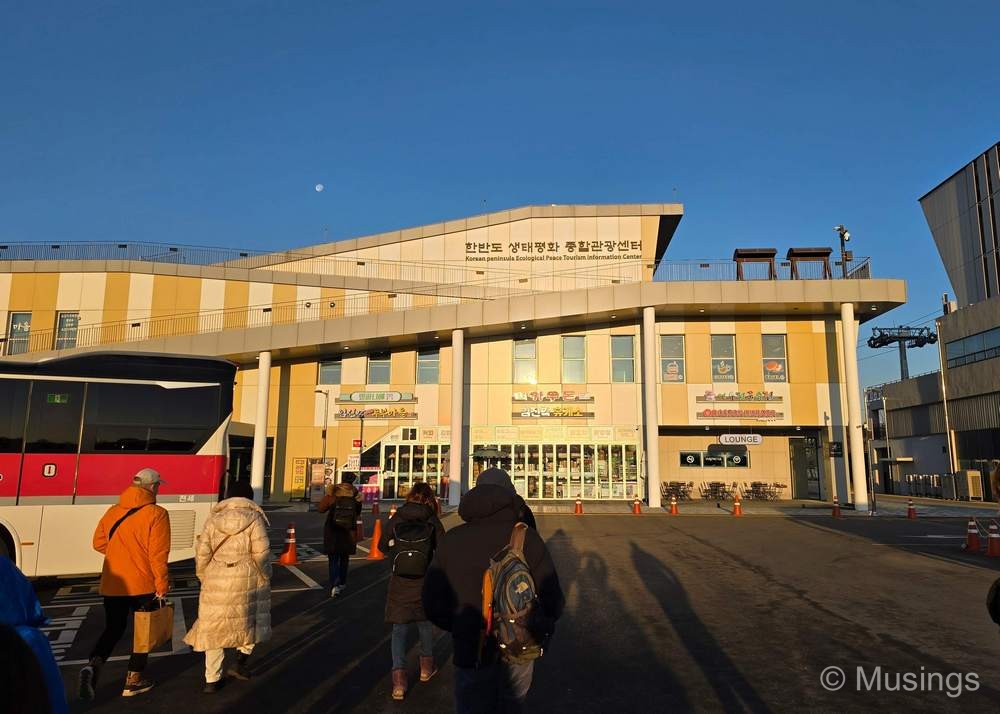
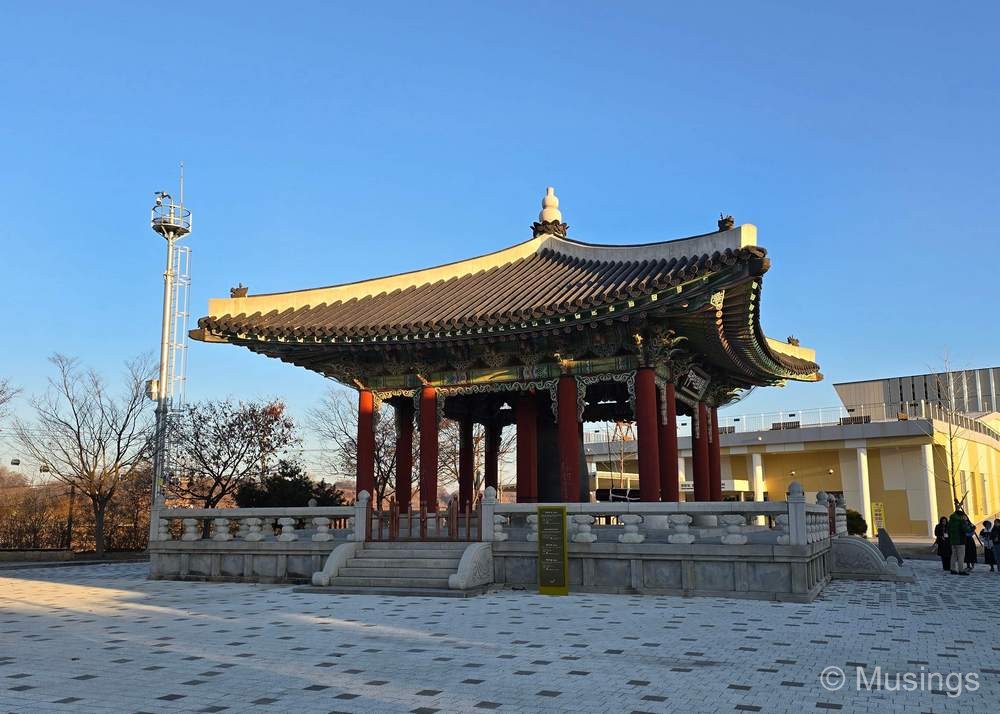
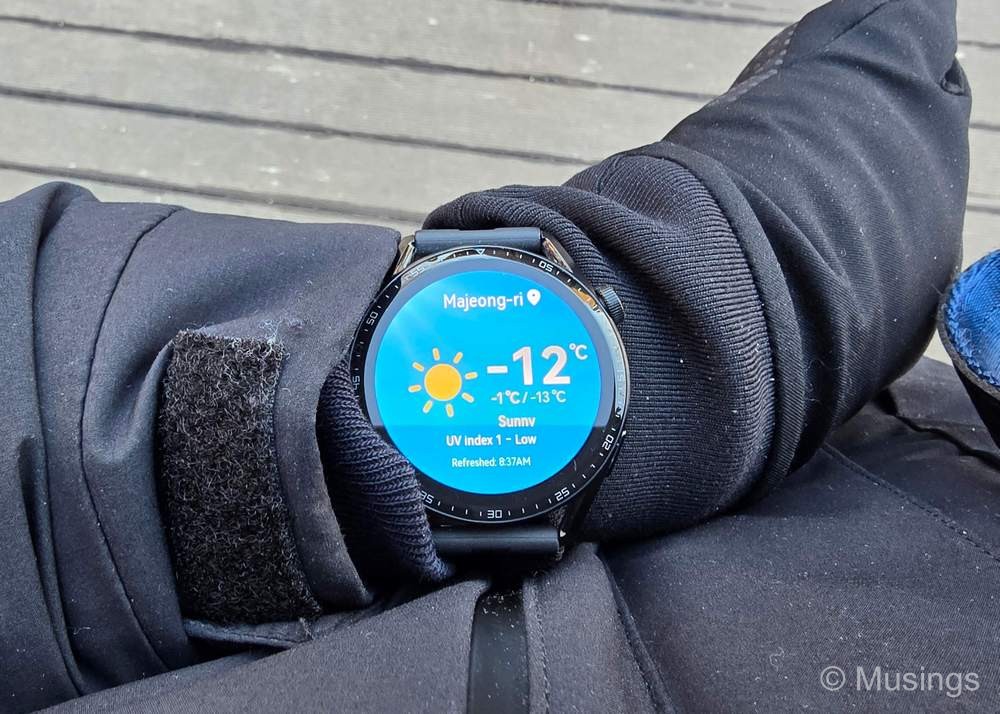
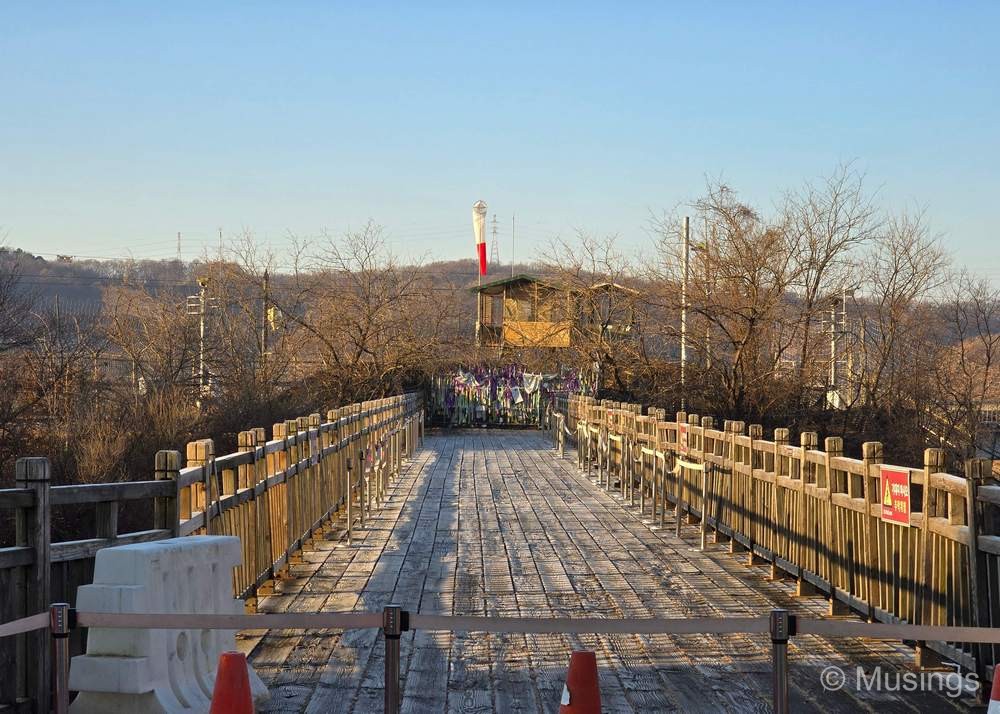
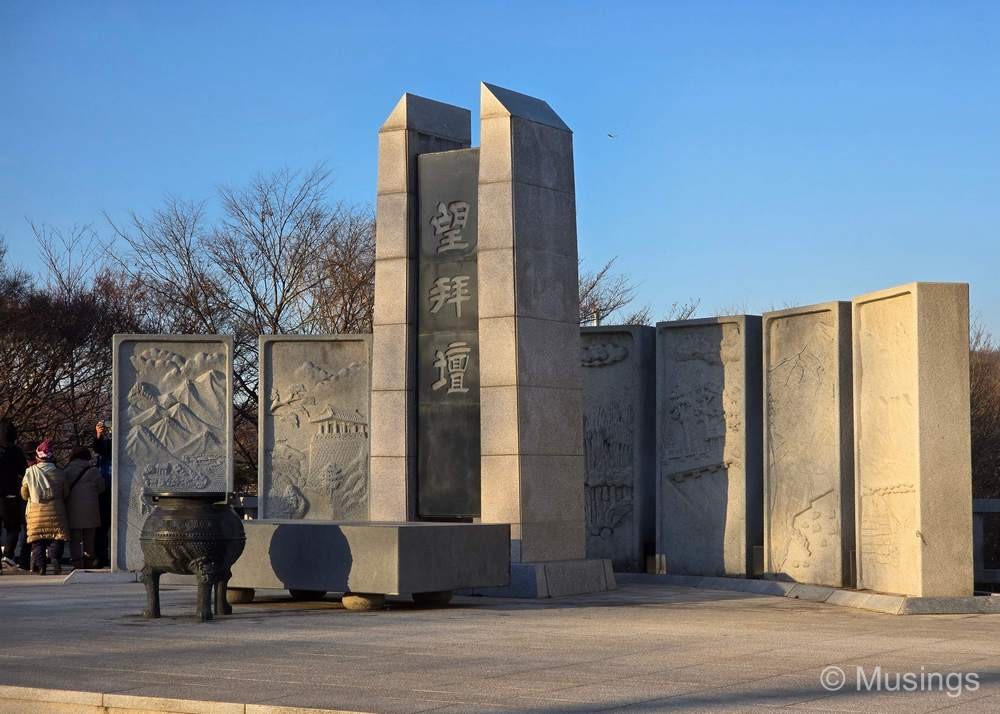
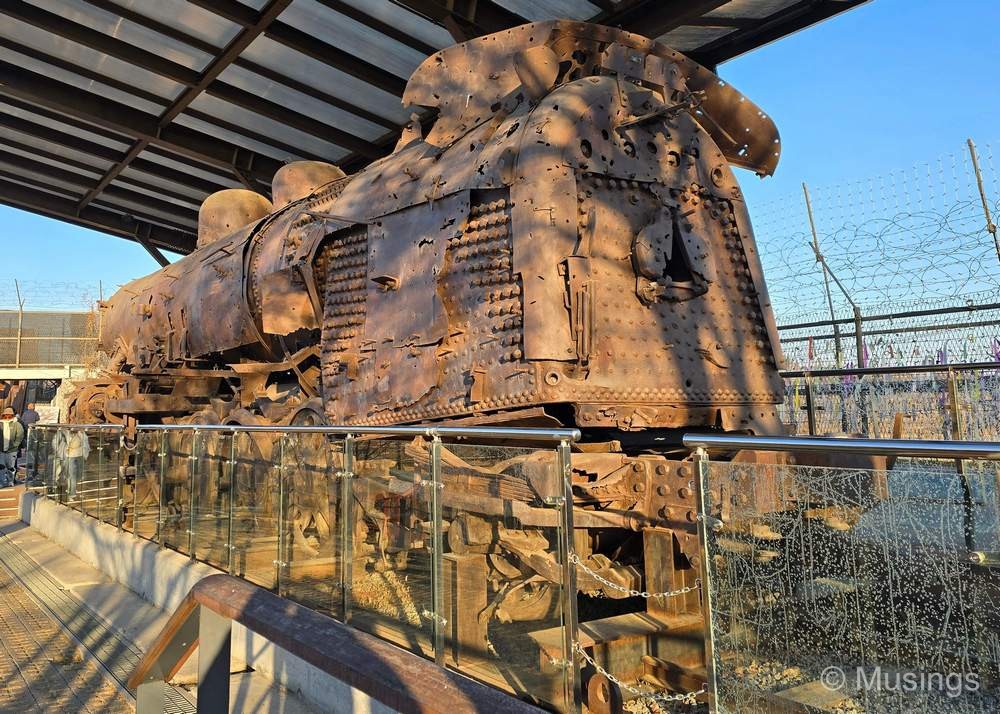
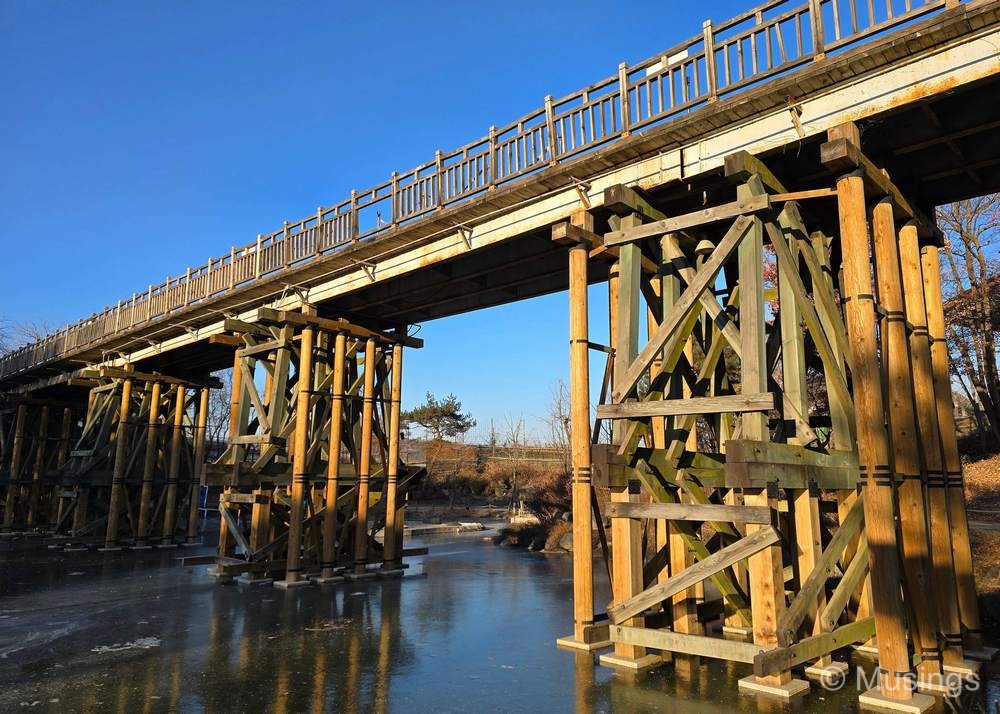
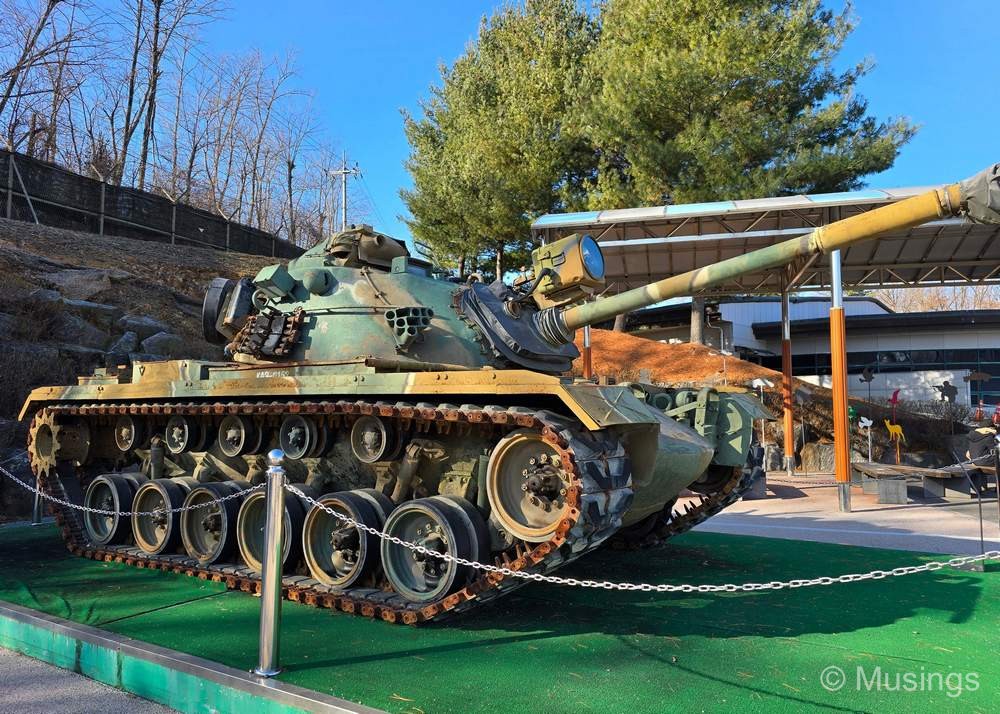
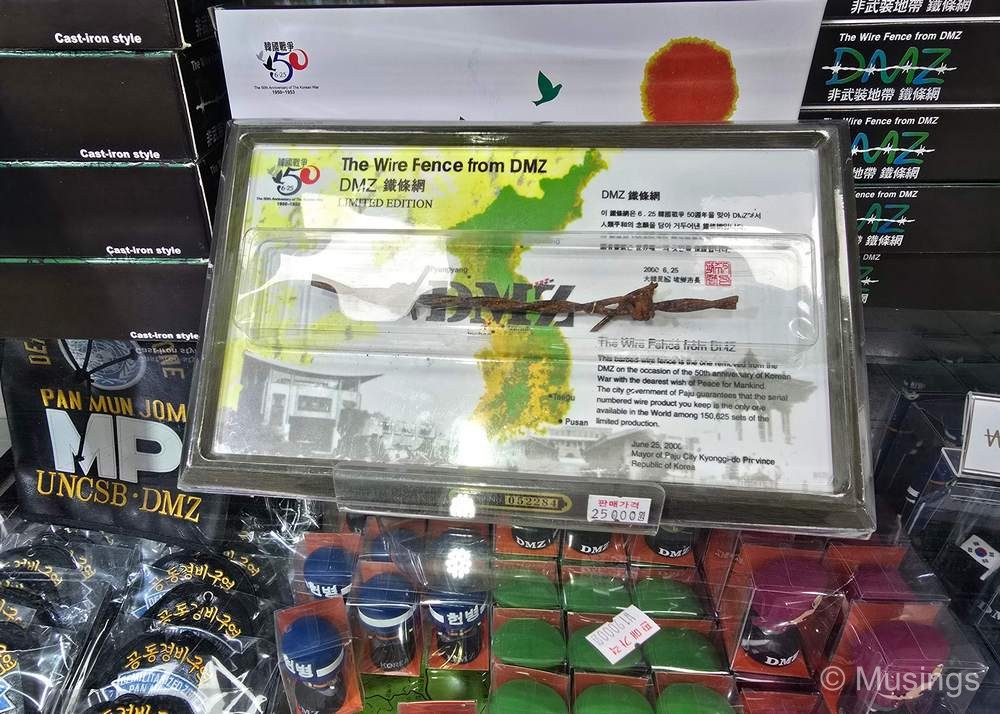
In all, this was an informative and deeply sobering visit for us, and that our guides – we had two as our group of 14 merged with another for the DMZ segment of the visit – were clearly earnest about informing visitors about the history of this place. I recommend anyone visiting the country to do this one.